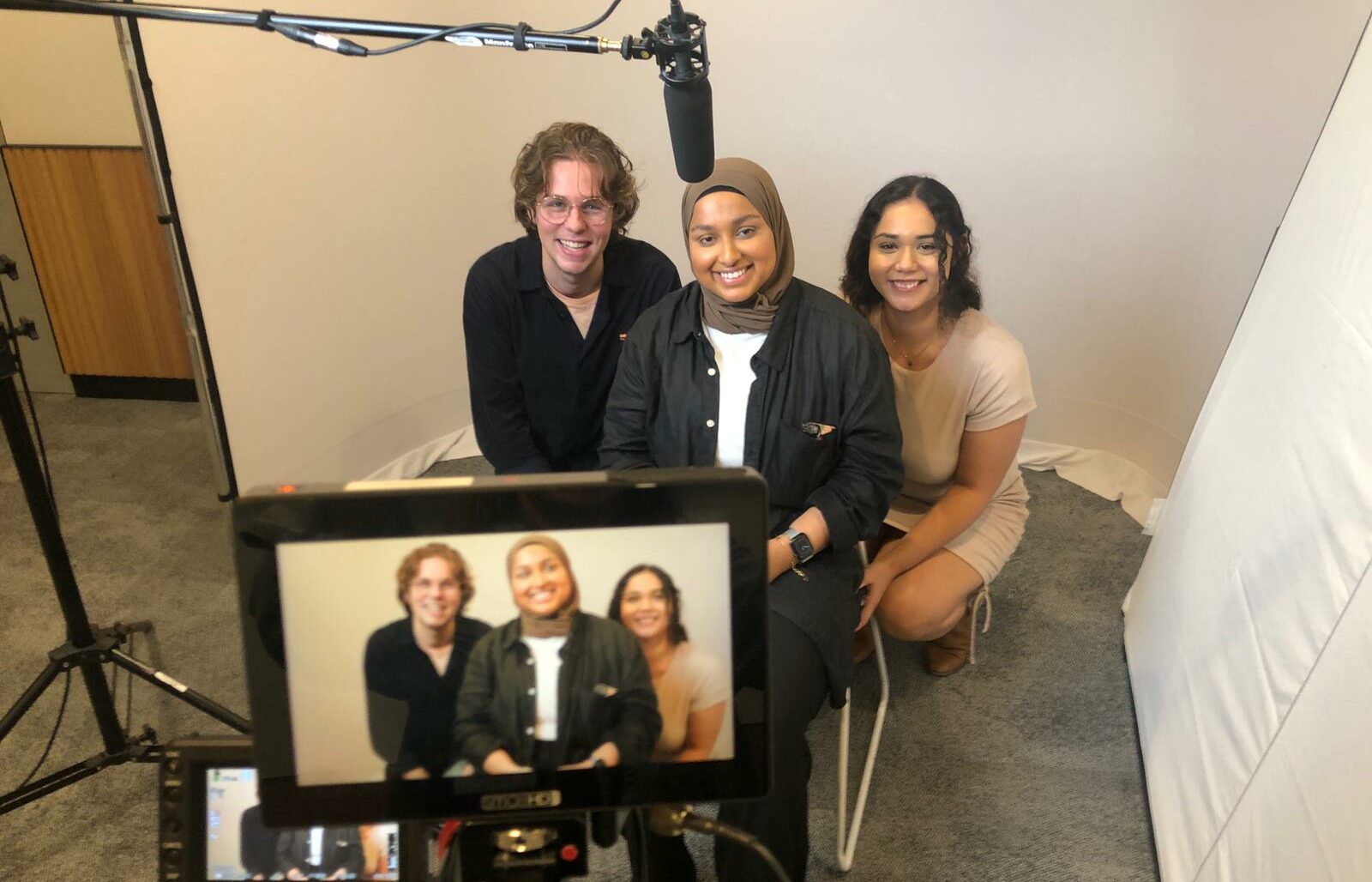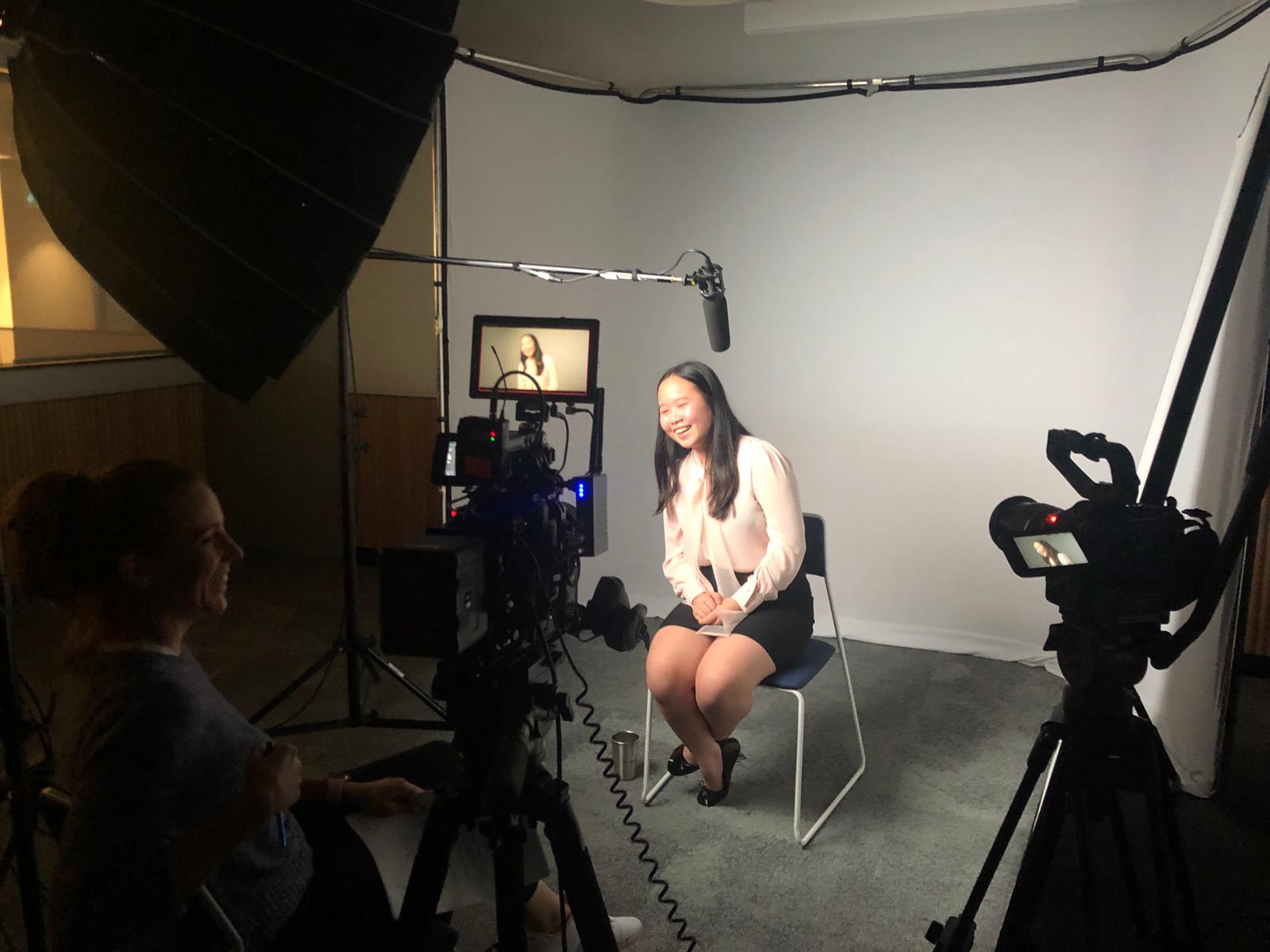Photos by Kim Ingles
Partner: Australia’s National Research Organisation for Women’s Safety (ANROWS)
What makes this project special
When it comes to tackling the ‘big issues’ society is facing, we know no better way than to use the power of story. Yet unravelling the stories contained within such complex, raw, and often harrowing topics such as domestic violence, requires significant skill, sensitivity and commitment to trauma-informed practice. Find out how, with the guidance of several of our most experienced digital storytellers, the team at Australia’s National Research Organisation for Women’s Safety (ANROWS) are using narrative to make the world safer for us all.
Story artefacts – what was ‘created’
‘Story artefacts’ are what you have in your hands as a result of a storytelling process (e.g. videos, blog posts, animations, illustrations). They are critical to unlocking the power of storytelling because they make stories tangible and give people, both internally and externally, the ability to interact with and share those stories.
Along with a digital illustration from the Report launch, we are proud to be able to share the following short-form videos featuring youth advocates, sharing how they conceptualise and understand domestic violence in their own words:
The background – for those who want to dive a little deeper
Impacting the health, wellbeing and safety of a significant proportion of Australians throughout all states and territories, approximately one quarter of women in Australia have experienced at least one incident of violence by an intimate partner.
These persistently high levels of violence against women and their children places an enormous burden on the nation’s economy across community services, health, and justice systems, not to mention on human rights and freedoms. In fact, intimate partner violence contributes more to the burden of disease (the impact of illness, disability and premature death) of adult women aged 18-44 than any other risk factor (2011 Australian Institute of Health and Welfare Burden of Disease Study (Ayre et al. 2016; Webster, 2016).
Australia’s National Research Organisation for Women’s Safety (ANROWS) is an independent, not-for-profit research organisation established to produce evidence to support the reduction of violence against women and their children.
Their vital work was established as an initiative of Australia’s first National Plan to Reduce Violence against Women and their Children 2010–2022 (the National Plan) by the Commonwealth Government and all state and territory governments of Australia.
Ever since, their team has delivered quality research and associated reports, research synthesis papers, tools and resources across all priority areas of the National Plan and has developed a reputation for excellence in the production of evidence to guide policy and practice in the violence against women field.
The challenge
Leading up to the release of its Report, ANROWS enlisted the support and guidance of Digital Storytellers to:
- Create a series of videos to promote the research report and to use as a resource in relevant training modules for prevention and/or education agencies;
- Centre young people’s experiences, drawing on language and tone that connected with them in a meaningful way.
“The project at the outset felt like it was so big and almost impossible within the timeframes we had, so I’m just grateful that Digital Storytellers could make our ideas possible in the first place.” — Annie Blatchford, Project Officer at ANROWS
The solution
Together we designed an ‘Evidence to Action’ project that encompassed several forms of digital storytelling, including animation, short-form film production, voiceover work, and live scribing.
“All of the people involved, animations, sound, filming, were so wonderful. They were all receptive to our briefs and produced great work. The workshop at the beginning of the process was definitely a highlight and we think is what made the videos so valuable and resonant with our primary stakeholders but also a broader audience too.” — Annie Blatchford, Project Officer at ANROWS
- Youth Story Discovery Workshop
Kicking off with a Story Workshop facilitated by Digital Storytellers and ANROWS, 10 young people were led through a trauma-informed process to discover, articulate and explore stories and language related to the Report. Ideas and anecdotes were recorded on a Miro board with several selected for further development in a collection of animated scenes and videos.
- Direct-to-camera film production
Following the group workshop, three wonderful participants took part in a small, intimate studio shoot with one producer and camera person. Invited to share their insights on the Report’s key themes in their own words, the focus was on ensuring that interviewees felt relaxed, supported and comfortable to share their thoughts and experiences, as well as representing the key content explored and developed out of the workshop.
- Animation and visual storytelling
To complement the direct-to-camera interviews, our team mapped out a small collection of scenes designed to illustrate and bring to life key themes and situations in a more accessible and digestible way. Created in a very pared-back aesthetic, this animation style was chosen to match the voices and findings of the report itself. Depicting young people in context such as scrolling through and dismissing ‘extreme’ news headlines on their phones, these animations are effective in illustrating how young people understand and conceptualise domestic violence.
- Voiceover recordings and post-production
Gathered from the studio shoot, voices from each interview were gathered to sit underneath the animated scenes. Once the interviews were complete and animations built, one of our incredibly talented editors (who was also the producer of this project) brought everything together in a series of pieces, underpinned by a subtle but emotive music track to aid the storytelling.
- Live scribing at webinar launch of the Report
The Report was launched at an online webinar facilitated by Body Safety Australia and featuring a panel of young people passionate about preventing violence against women. Beginning with a presentation from the Report’s lead author, Dr Erin Carlisle, it was followed by a panel discussion on the report’s findings as well as a discussion of ideas and solutions about how to talk about and prevent domestic violence and abuse in the public arena. Ending with a fruitful audience Q&A, throughout the webinar, one of our talented scribes Tatum Kenna brought the conversations to life with a series of live digital illustrations.


